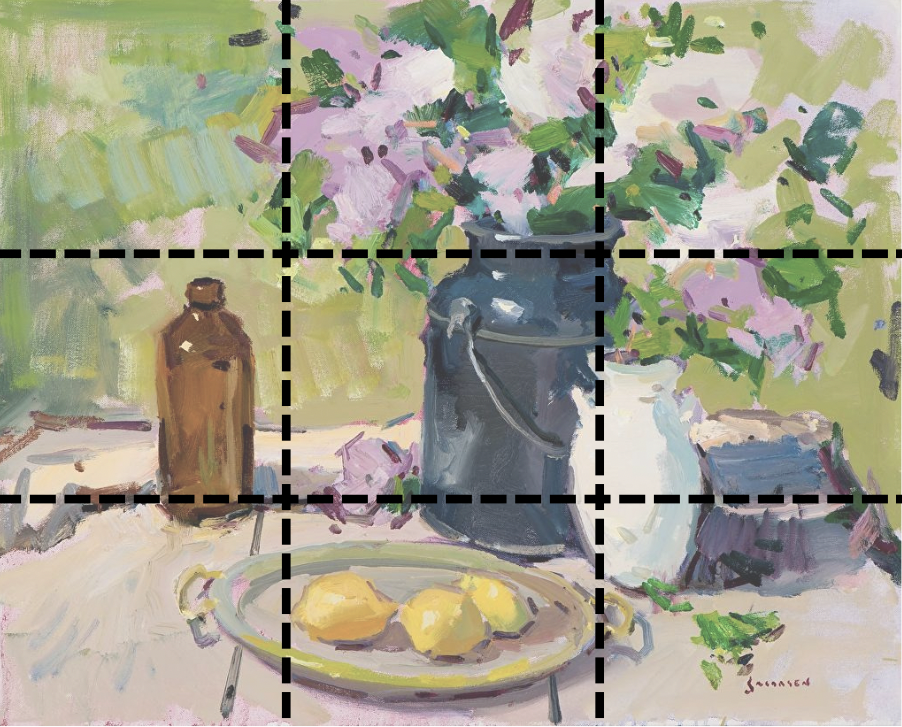Using Design Intentionally
Let’s talk about design with the help of artist Eric Jacobsen!
The reason we like to go into the meaning of design with different artists is that everyone has their own take on it, to a certain degree. The topic may seem universal, but every artist has a different philosophy on why design is important in their own unique work and their students’ work.
You have heard it before; the design is the most important aspect of painting. By design, we mean composition. The words “design” and “composition” are interchangeable, but some people describe it as composition and some as design. Design, put simply, is the placement of shapes, values, and colors on a flat panel or canvas. Within the panel or canvas, an artist is trying to lay out their elements to be pleasing to the human eye. Certain places are appealing to the viewer, and some are not.
It is a commonly known practice to divide a painting, or canvas, into thirds from left to right and from top to bottom. It is nice to design around any one of those four intersections or sweet spots and place your focal points there to get the best design. Essentially, you are trying to create a stopping point or a focal point in your painting for the viewer. Once you figure out the placement of the focal point, you need to create a lead into the focal point. Ask yourself, “how am I going to move the viewer’s eye to the focal point?” Eric Jacobsen is mostly concerned with how people “move” into the painting and where their stopping point is. Design is deliberate and intentional, not accidental. Eric Jacobsen’s still life’s are great examples of focal point placement.
When you are out looking at a motif, or have a reference photo, one tip from Eric Jacobsen is to switch your thinking from a subject-oriented mindset to a design-oriented mindset. For example, if you were painting a barn, you would need to focus on where to place the barn on your canvas to make it your focal point. Place it thoughtfully and intentionally, as opposed to putting the barn in the middle of the canvas and only focusing on the subject matter. Moving slowly and taking your time to choose your placement will help you shift to a design-oriented mindset and painting style.
“If you are going to break rules, you better know why and that you can get away with it.” - Eric Jacobsen
To learn from Eric Jacobsen, join him in his video download series:
"A BRUSH WITH NATURE: CREATING LOOSE PAINTINGS"
To listen to Eric and Gabor’s full podcast on how to “Painting by Design” click here.


